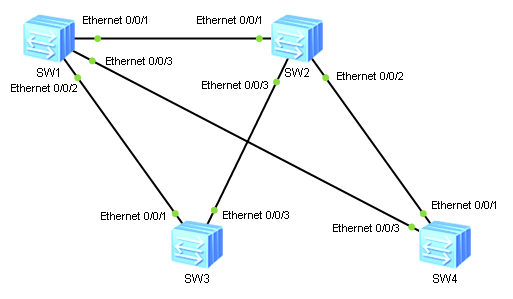Some of you may know Cisco’s err-disable recovery feature, which allows to automatically bring a port from err-disable back to UP state. Huawei switches have similar functionality, which is called error-down auto-recovery.
There are five reasons a port can enter into error-down state:
- BPDU protection
- EFM threshold
- EFM remote failure
- Auto defend
- Link flapping
- MAC address flapping
Let’s take a look, how this feature works, in a network running STP, when BPDU protection is the reason that a port goes into DOWN state. If you are not familiar with BPDU protection feature, read my previous article “Protecting STP on Huawei switches”.
I have configured STP BPDU protection on the Ethernet 0/0/1 interface of labnarioSW1 switch as follows:
[labnarioSW1]int e0/0/1 [labnarioSW1-Ethernet0/0/1]stp edged-port enable [labnarioSW1]stp bpdu-protection
 Labnario Huawei From Scratch
Labnario Huawei From Scratch
